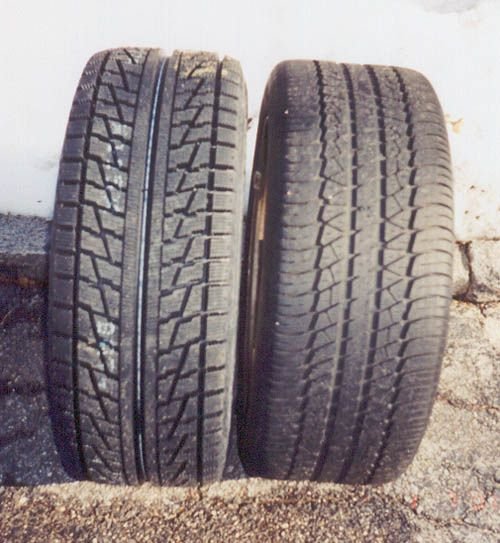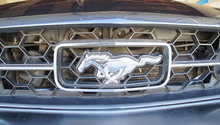Ford Mustang V6 and Mustang GT 1994-2014: Winter Driving
Driving your Mustang in the winter doesn't have to be a white-knuckle adventure. Take a few cues from this article and be confident in the snow and ice.
This article applies to the Ford Mustang V6 and Mustang GT (1994-2014).
Driving a fairly powerful rear wheel car in the winter is something that I have a lot of experience with. For the first few months, every time I'd start the car, I'd simply hope that the road crews had salted everything and that everyone around me wasn't an idiot. Unfortunately, that's almost always not going to be the case. Fortunately, I spent the better part of nine years driving my high performance rear-wheel rocket on a daily basis in the dead center of the United States where I couldn't avoid snow. I learned a few things that you are welcome to use when it comes to trekking out in your Mustang once the snow and ice becomes an issue.
Tires
Our good friends at Ford did not think that placing really nice tread tires on the Mustang was a cost productive option. Additionally, they probably assumed that snow and ice only affects 30 to 40% of the United States on a regular basis, so forget those guys. I'm probably reaching on that comment, but I've spent enough time driving in snow and ice that I'm pretty sure it's a true comment. Ironically, Ford is based in Detroit and they get a TON of snow, so they should know better. But I digress. A great tire is something similar to the Bridgestone Blizzak line. It was developed specifically for snow and slush conditions. Most major tire companies have a similar brand, with similar options. The cost varies per tire, but having a winter tire on your Mustang will provide you with additional traction especially compared to stock or similar tires.

Fuel
One of the first things my dad (a full-time truck driver) taught me about driving a high performance rear-wheel drive car in snow and ice, was to keep the gas tank full, never letting it drop below half a tank. It's in the rear of the car and it can help keep the rear wheels on the ground. One gallon of gas weighs in at six pounds. So keeping the 15.7 gallon tank on the Mustang full adds approximately 94 pounds to the back wheels without any additional people riding along. May not sound like much, but it can mean the difference in spinning the wheels from a stop sign or not. This is an easy one for everyone to follow.

Gear Shift
It doesn't matter if you have a manual transmission or an automatic, neutral is your friend. Most people take neutral for granted. It's just that spot that they go past when shifting gears or going from reverse to drive. Well guess what? If you're coming to a stop, or if you would like to stop on ice, then making the engine stop turning the wheels is a good idea. In a rear-wheel drive car, dumping the transmission into neutral when coming to a stop sign or light does just that little bit more to help your engine not fight you. The brakes are on the front, the back is going to want to keep moving, but don't let it. It's yet another little trick that can mean the difference in sliding sideways even when you're trying to take it easy out there.

Related Discussions
- Winter Driving a Mustang - Mustangforums.com
- Winter GT Daily Drivers - Mustangforums.com
- Supercharged Winter Driving - Mustangforums.com
- Drive a Convertible in Winter? - Mustangforums.com
- Severe Winter Driving, No Problem -Mustangforums.com






